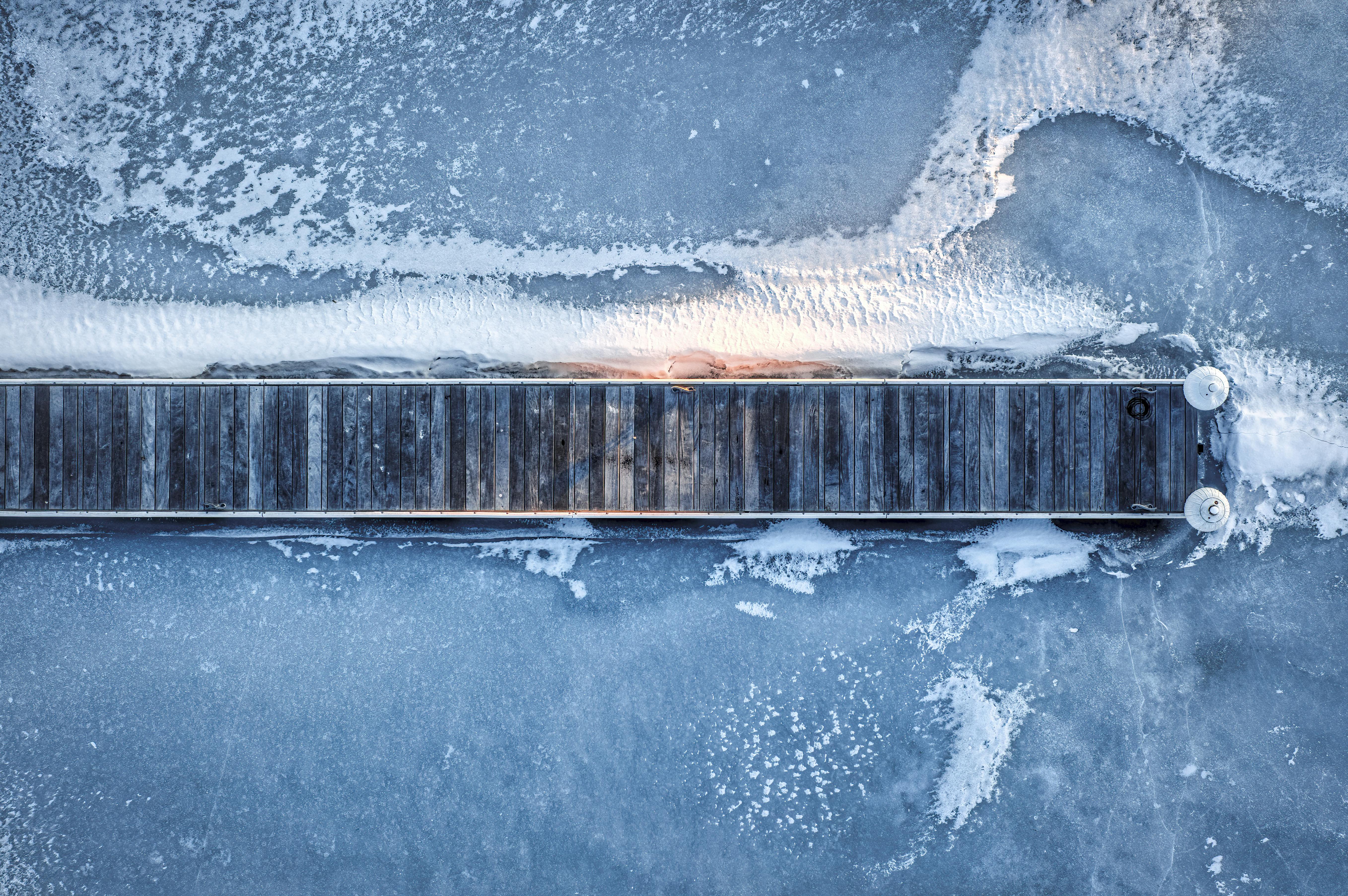Distilled water is often used for purposes such as mixing with formula or drinking, but it can be lacking in minerals and have a very low pH. Increasing the pH of distilled water can help to make it more alkaline and give it more of a mineral content. This article will explain how to increase the pH of distilled water.Increasing the pH of distilled water can provide numerous health benefits. Alkaline water has a higher pH than regular drinking water, meaning it is less acidic. This is beneficial to our bodies because an acidic environment can lead to a variety of health issues. Alkaline water helps neutralize acids in the body, helping to balance the body’s pH and reduce inflammation. Additionally, alkaline water can help to reduce symptoms of acid reflux and other digestive issues, as well as help detoxify the body by flushing out toxins. Furthermore, alkaline water can help improve hydration and nutrient absorption, leading to improved overall health.
Reasons Behind Low pH in Distilled Water
The pH of distilled water is usually around 5.6 to 6.0, which is quite low when compared to other types of water, such as tap water or spring water. This low pH is due to several factors, such as the lack of minerals in the water and carbon dioxide in the atmosphere.
Distilled water has no minerals because it is made by boiling the water and then condensing the steam. This process removes all of the dissolved solids from the source water, including minerals like calcium, magnesium, potassium, and sodium. Without these minerals, distilled water has a much lower pH than other types of water.
Another factor that contributes to low pH in distilled water is carbon dioxide (CO2) in the atmosphere. When CO2 enters into contact with distilled water, it reacts with the H2O molecules and forms carbonic acid (H2CO3). This reaction lowers the pH of the distilled water even further.
The lack of buffers and organic matter also contributes to a low pH in distilled water. Buffers are compounds that help maintain a stable pH over a wide range of conditions;
Ways to Increase PH in Distilled Water
Increasing the pH of distilled water can be achieved through a number of methods. The simplest and most cost effective way is to add baking soda, also known as sodium bicarbonate, to the water. Baking soda helps to raise the pH of the water, making it more alkaline. Another option is to add calcium carbonate or magnesium carbonate. These minerals help to neutralize the acids in the water, resulting in a more alkaline pH level. Additionally, adding small amounts of lime or lemon juice can also help increase the pH level of distilled water.
Using a commercial pH adjusting product is another way to raise the pH level of distilled water. These products typically contain buffers and other substances that will help increase the alkalinity of the water. However, it is important to follow instructions carefully when using these products as they can easily cause an over-alkalization which can be detrimental for both plants and animals.
Lastly, adding rock dust or powdered limestone can also help increase pH levels in distilled water. These substances are full of minerals that will help adjust acidity levels
Use of Baking Soda for Increasing PH in Distilled Water
Baking soda, or sodium bicarbonate, is commonly used to raise the pH level of distilled water. This is done by adding a small amount of baking soda to a container of distilled water and stirring it until the baking soda is completely dissolved. The resulting solution will have a higher pH than the original distilled water. The exact amount of baking soda needed to raise the pH level depends on the initial pH level and desired pH target.
When using baking soda to raise the pH in distilled water, it is important to use only food-grade baking soda, as this type has been processed and purified for use in food products. Baking soda should be added slowly and stirred thoroughly until it is completely dissolved before checking the pH level with litmus paper or a digital pH meter.
It is not recommended to exceed a 7.5-8.0pH level when using baking soda as this can reduce oxygen levels in the water which can be harmful to fish and other aquatic life. It is also important to remember that raising the pH with baking soda may cause other minerals such as calcium and magnesium to precip
Advantages of Using Baking Soda for Increasing PH
Using baking soda to increase pH in water is a great way to improve the quality of drinking and bathing water. Baking soda is an inexpensive, natural product that can be used to raise the pH levels of water. Baking soda helps to reduce contaminants in the water, making it safer for consumption and use in everyday life. Additionally, baking soda helps reduce unpleasant odors and tastes in the water, making it more enjoyable to drink and use.
Baking soda is also a much safer alternative to other chemicals typically used to increase pH levels. Other chemical treatments often contain harsh ingredients that can be dangerous to humans and animals when ingested or inhaled. By using baking soda, you are reducing your risk of exposure to potentially harmful chemicals.
Another advantage of using baking soda for increasing pH is its cost effectiveness. It is a relatively inexpensive product that can be purchased at most grocery stores or online retailers. Additionally, it is easy to use and does not require any special equipment or tools. All you need is a measuring spoon and some baking soda!
<
Use of Lime Juice for Increasing PH in Distilled Water
Lime juice is widely used to increase the pH in distilled water. The reason for this is that lime juice contains citric acid, which increases the pH of the water. The citric acid reacts with the water molecules, making them more alkaline. This helps to neutralize any negative ions that may be present in the distilled water.
The amount of lime juice to use depends on how much pH you need to increase. Generally, it is recommended to start with a few drops of lime juice per gallon of water and then increase as needed. The process should be repeated until you achieve the desired pH level. It is important to note that too much lime juice can make the water too alkaline and can damage the equipment used for drinking or cooking with it.
In addition to increasing pH levels, lime juice can also be used as a natural disinfectant and deodorizer for distilled water. Lime juice has antibacterial properties and can help remove any bacteria from the water, making it safe for consumption. It is also
Advantages of Using Lime Juice for Increasing PH
Increasing the pH of a solution is an important process in many applications, and lime juice is one of the most popular and effective methods for doing so. The acidic nature of lime juice helps to lower the pH of a solution, making it more alkaline. This process is beneficial for a variety of reasons, including its ability to reduce water hardness, improve taste and reduce levels of bacteria.
One of the main advantages of using lime juice to increase pH is its ability to reduce water hardness. Hard water contains high amounts of calcium and magnesium, which can cause scaling and deposits in pipes, fixtures, and other surfaces. By increasing the pH level through adding lime juice, these minerals can be precipitated out, thereby reducing water hardness.
Another benefit associated with using lime juice to increase pH is its ability to improve taste. Lime juice can help neutralize any acidic or bitter flavors that may be present in a solution by increasing its alkalinity. This can help make water more palatable and enjoyable to drink.
Finally, one
Use of Hydrochloric Acid for Increasing PH in Distilled Water
Hydrochloric acid, also known as muriatic acid, is a corrosive and powerful mineral acid which is produced by dissolving hydrogen chloride gas in water. It is extensively used in various industrial applications due to its high acidity and low cost. It can also be used to increase the pH level of distilled water.
Distilled water is a type of purified water which has had all minerals and other impurities removed from it through a distillation process. This type of water has a low pH level, usually around 6 or 7, and needs to be treated before it can be safely consumed. Adding hydrochloric acid to distilled water helps to increase its pH level, making it suitable for drinking.
The process of increasing the pH level of distilled water with hydrochloric acid involves adding a small amount of the acid to the water until the desired pH level is reached. The amount of hydrochloric acid needed depends on how much distilled water is being treated and what the desired pH level should be.
When adding hydrochloric acid to distilled water, it is important to use protective equipment

Conclusion
Increasing the pH of distilled water is possible by adding a base like baking soda or lime juice. It is important to understand that adding too much of these substances can cause a significant change in the pH, so it is best to start with a small amount and then gradually work up to the desired pH level. Additionally, distilled water can also be naturally alkalized by boiling it or by adding natural ingredients such as lemon juice, apple cider vinegar, or baking soda.
In conclusion, increasing the pH of distilled water is a simple process but one that should be done carefully to avoid significant changes in its pH level. By understanding how to increase the pH of distilled water with natural ingredients and other substances, anyone can create an alkaline environment for their health and wellbeing.

